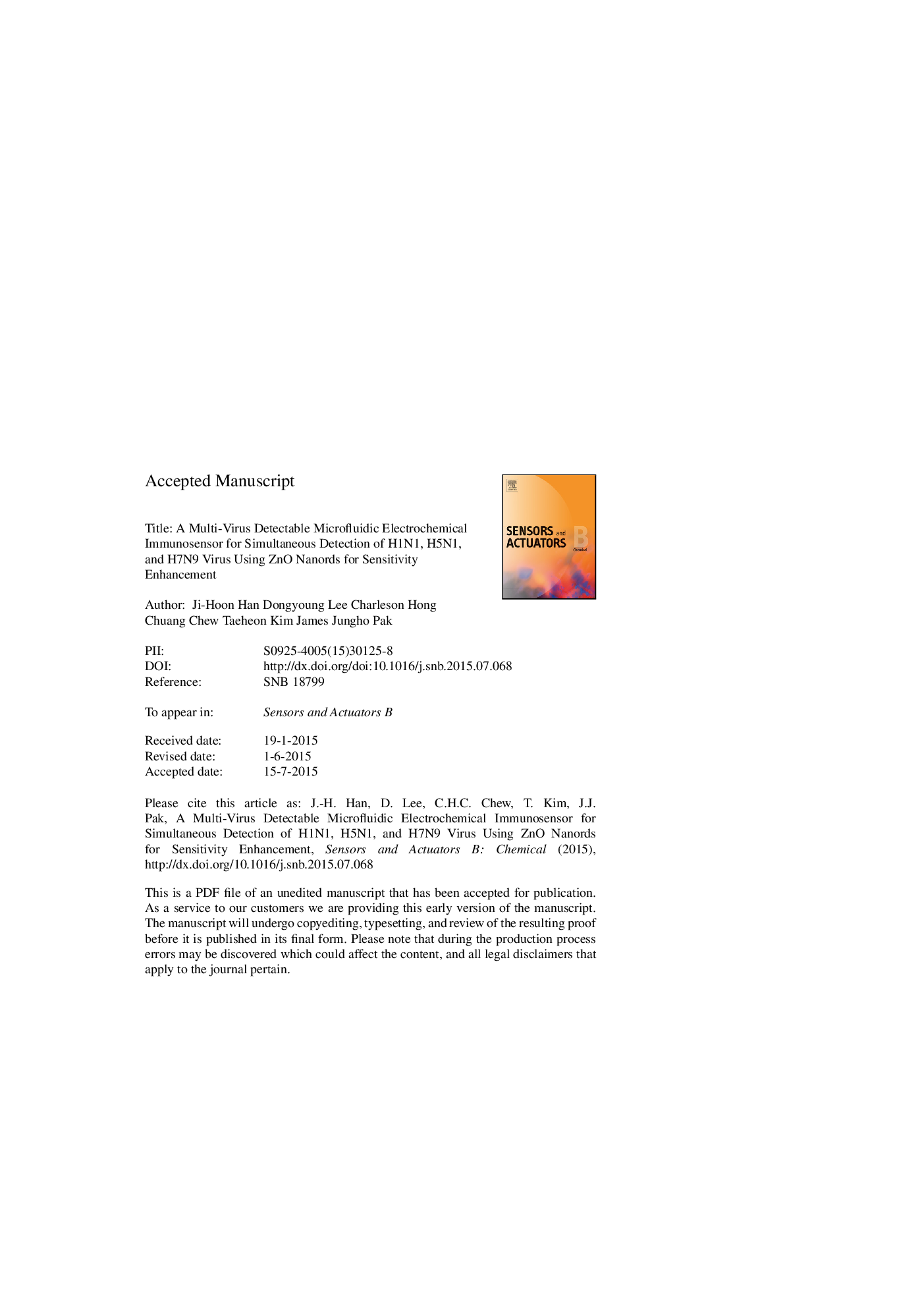| Article ID | Journal | Published Year | Pages | File Type |
|---|---|---|---|---|
| 7144134 | Sensors and Actuators B: Chemical | 2016 | 23 Pages |
Abstract
This paper describes a multi-detectable and nano-flow immunosensor based on ZnO nanorods (NRs) grown on the inner surface of PDMS sensor region for sensing H1N1, H5N1, and H7N9 influenza viruses simultaneously using electrochemical method. Nanostructured ZnO NRs with a high isoelectric point (IEP â¼9.5) tend to interact electrostatically with proteins with lower IEP such as H1N1, H5N1, and H7N9 antibodies. ZnO NRs were hydrothermally grown on the upper inner surface of the nano-flow PDMS sensor region. The forementioned three influenza viruses were successfully detected from three separate sensing regions by measuring the oxidation current of 3,3â²,5,5â²-tetramethylbenzidine (TMB) by horseradish peroxidase (HRP) conjugated on capture antibody of those influenza viruses when proper potential was applied. The proposed immunosensors were evaluated using 1Â pg/ml, 10Â pg/ml, 100Â pg/ml, 1Â ng/ml, and 10Â ng/ml of H1N1, H5N1, and H7N9 antigens by amperometry. These immunosensors showed high selectivity toward H1N1, H5N1, and H7N9, which was successfully confirmed by distinguishing the target virus individually from a mixture of three virus antigens. A low limit of detection was demonstrated by detecting as low as 1Â pg/ml of each virus and it is believed that this was possible by enhancing the sensitivity with the ZnO NRs grown on the PDMS surface in the sensing region. The steady-state oxidation current output linearly increased with respect to the logarithm of the H1N1, H5N1, and H7N9 virus concentrations in the range of 1-10Â ng/ml.
Related Topics
Physical Sciences and Engineering
Chemistry
Analytical Chemistry
Authors
Ji-Hoon Han, Dongyoung Lee, Charleson Hong Chuang Chew, Taeheon Kim, James Jungho Pak,
